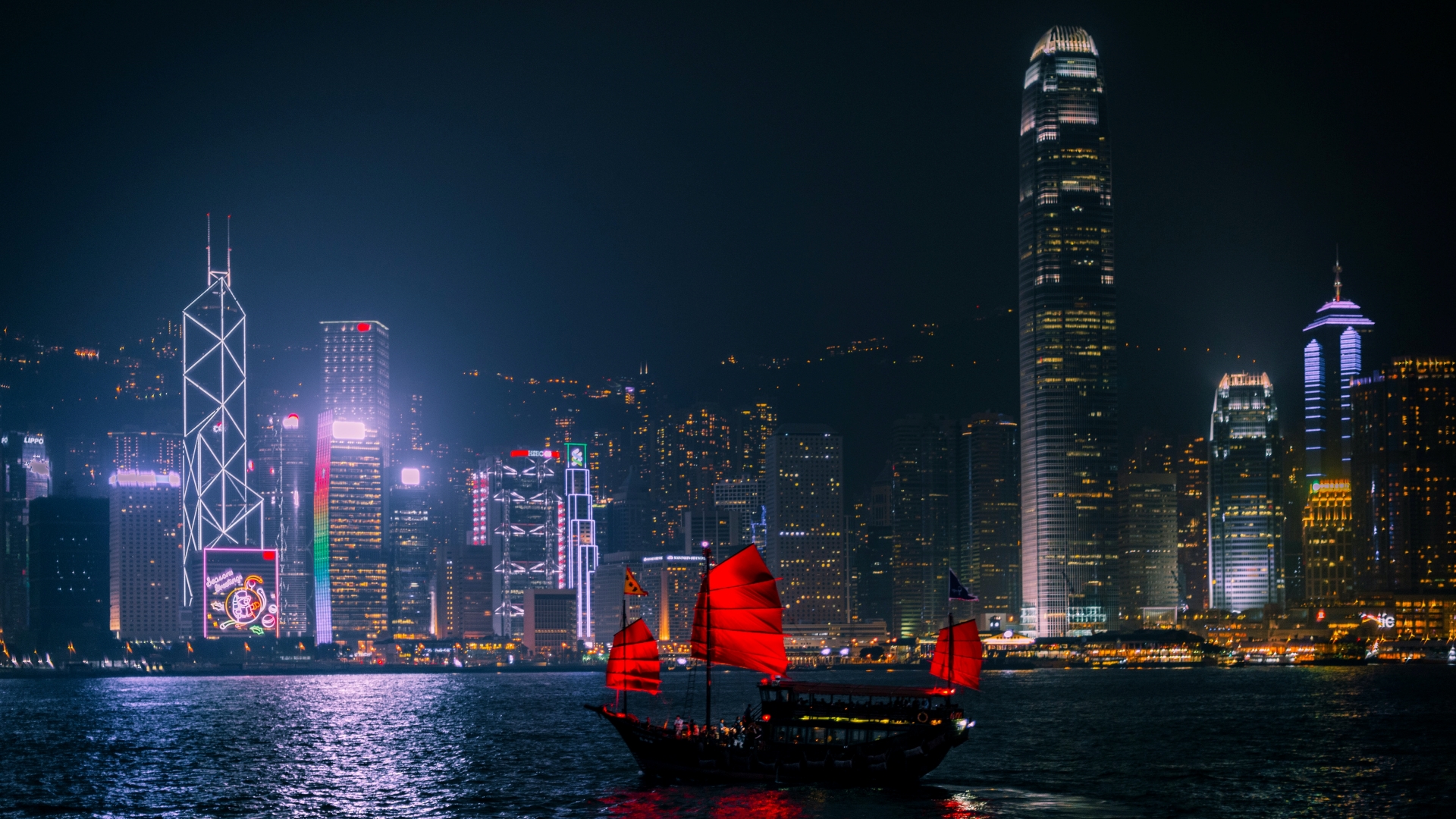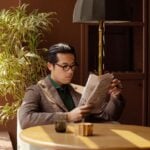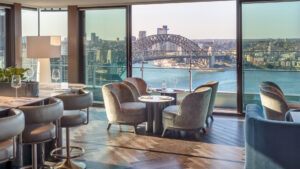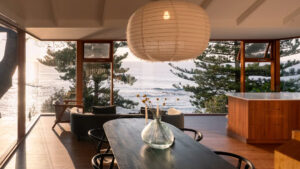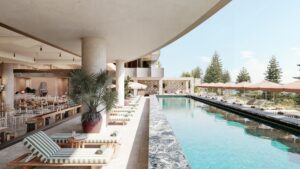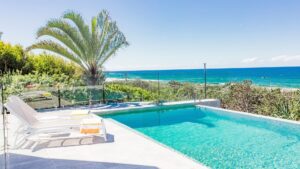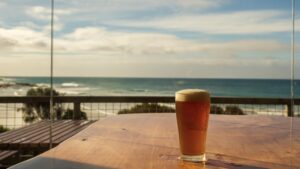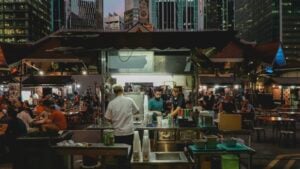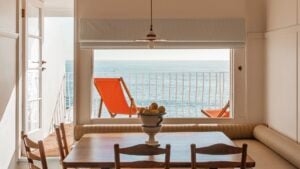Regardless of your politics or personal lived experience, I think most of us would agree that Hong Kong — the historic Asian mega-city off China’s southern coast — has had a challenging few years. Even prior to its subjection to some of the strictest COVID-19 measures in the world, the territory endured nearly a year of turbulent protests — the ramifications of which will be felt in the HKSAR’s economy and social fabric for years to come.
Despite that, the territory’s trade and tourism organs are working hard to put things back on track – because who really wants Singapore to remain the one global financial hub in Asia? No offence, lads.
Sophisticated lot that the BH readership invariably are, in this travel guide, I won’t be wasting time with a bunch of pre-arrival info: ergo, the best times to visit; what sort of clothes to pack; and whether you can travel visa-free (tl;dr – you can, for up to 90 days).
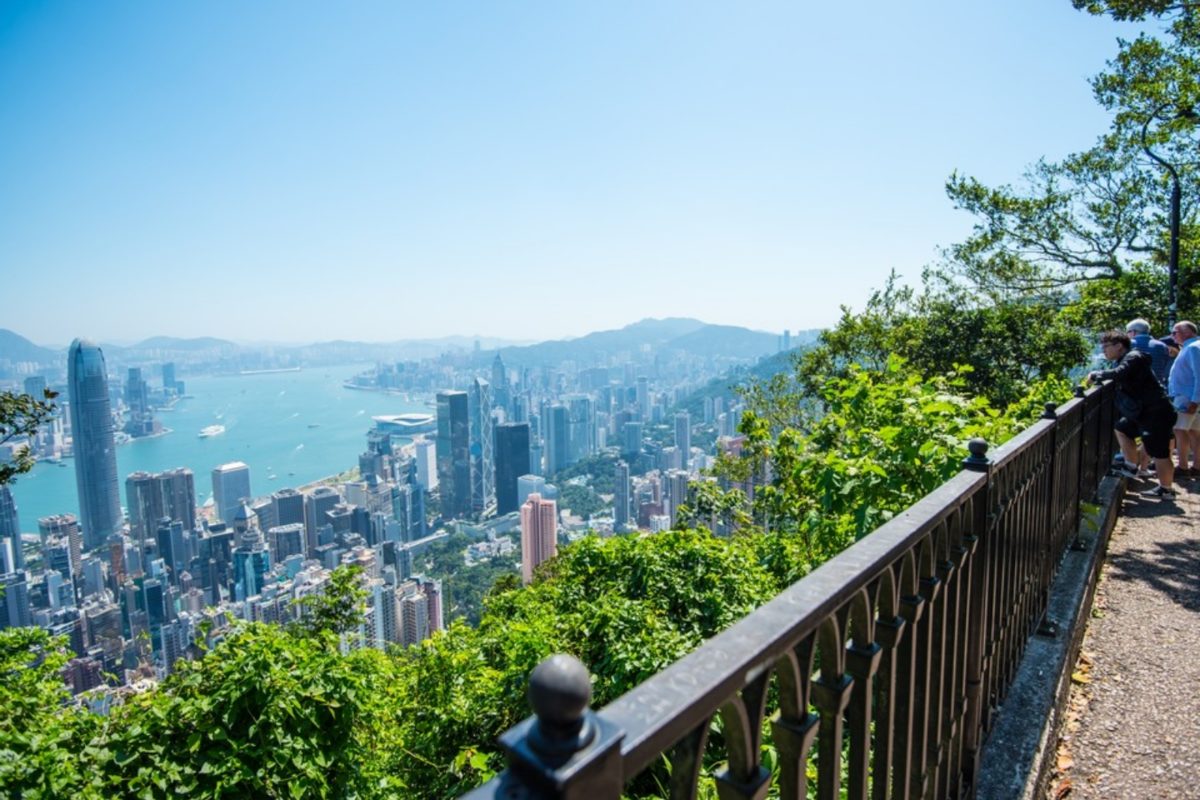
Instead, the crux of this particular Hong Kong travel guide will be taken up by recommendations I feel are most emblematic of the city. Experienced together, each of these eateries, tourist attractions and shopping destinations wove a thread strong enough to keep me in the +852 for close to half a decade.
For those with open minds and an innate thirst for adventure, I submit: of all the colony-turned-tiger economies once administered by the British Empire, few remain as eclectic and downright fascinating as Hong Kong. Here then — according to the wildly subjective experience of yours truly — is how to make the most of the city in 96 hours.
Jump To:
Stay
The Upper House – Hong Kong Island
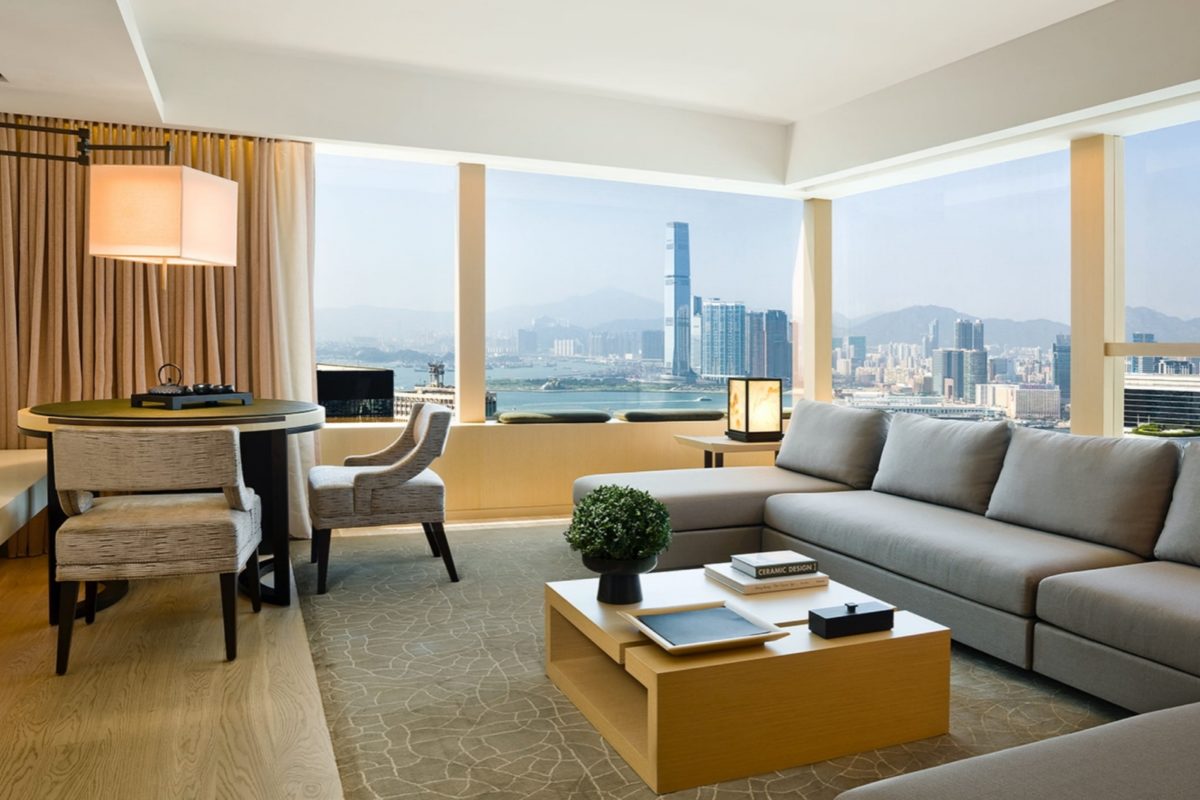
A hotel so legendary that it put Hong Kong on the map of luxury travelers based half-way around the globe, Swire Hotels’ Upper House remains a fixture of the city’s luxury hospitality landscape – even a decade after opening.
A soaring 117-room property infused with the ethos of a boutique hotel, The Upper House pioneered a number of firsts that have since become fundamental to the playbook of luxury hotels in East Asia (and beyond). To wit: its original brief as high-end residential apartments mean even an entry-level hotel room here clocks in at 730 sq. ft. (nearly 30 percent bigger than the average Island-side apartment); while the interiors of local architect André Fu continue to defy clichés of trend: propelled forward by discreet and witheringly tasteful combinations of Asian design and characterful building materials.
Granted, there’s no infinity pool or laundry list of F&B destinations – the property encloses a single lounge & restaurant, the sky-high proto-Mediterranean jewel-box Salisterra – but what keeps gilded travelers coming back is practically everything else.
An impassioned team of young and bright FOH workers – embodied in GM Kristina Snaith-Lense – and an unbeatable location in Admiralty (equidistance from landmarks like the Peak Tram and Hong Kong Park) make this a no-brainer if your goal is to find refuge at the heart of the city’s laylines – all on a baller budget, naturally.
Interested in a more in-depth analysis of this property? Then check out our full hotel review of The Upper House Hong Kong.
Rosewood Hong Kong – Kowloon
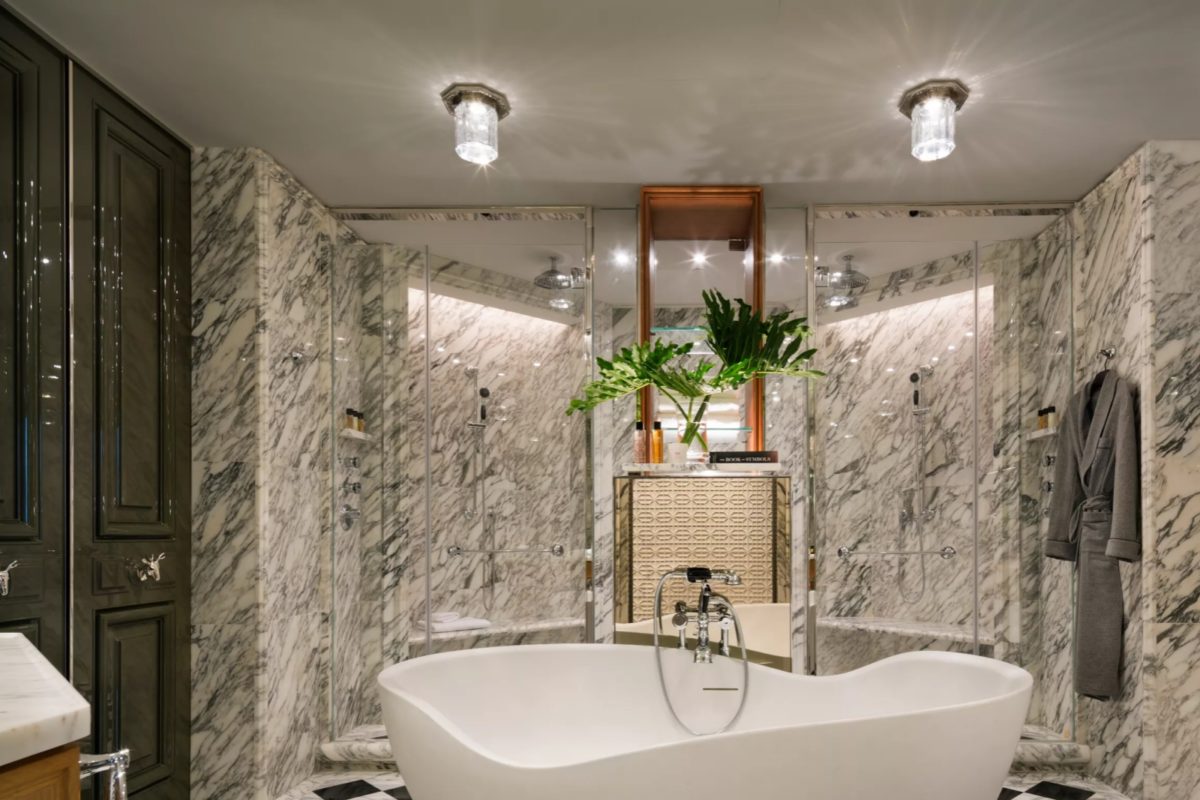
Located far from the busy streets of downtown Hong Kong, and at the heart of the burgeoning Victoria Dockside complex in East Tsim Sha Tsui, Rosewood’s eponymous flagship in Kowloon is so grandiose (in every sense of the word) it may as well generate its own magnetic field.
With roughly quadruple the occupancy of its closest competitors across of Victoria Harbour, it’s easy (and indeed, satisfying) to lose yourself within Rosewood’s palatial grounds – at one of the property’s 10 on-site dining outlets, award-winning Asaya Spa and nested ‘members only’ club, Carlyle & Co.
The hotel’s somewhat overstated remoteness from tourist hotspots on the Island – think Lan Kwai Fong and Causeway Bay – might even be looked upon favourably by those in search of an authentic journey. A short 10-minute walk (via the connecting K11 mall) will give you access to the closest MTR station, from where you can conveniently explore all those unique local attractions the Kowloon peninsula has to offer. (For a real crash course in ‘Dark Side’ living, consider alighting at Mong Kok station – home to some of the best street food stalls in the city and the wonderfully vibey Temple Street Night Market).
Interested in a more in-depth analysis of this property? Then check out the full Rosewood Hong Kong hotel review.
Play
…among the city, art & culture hotspots and hiking trails that will steal your breath away.
Visit
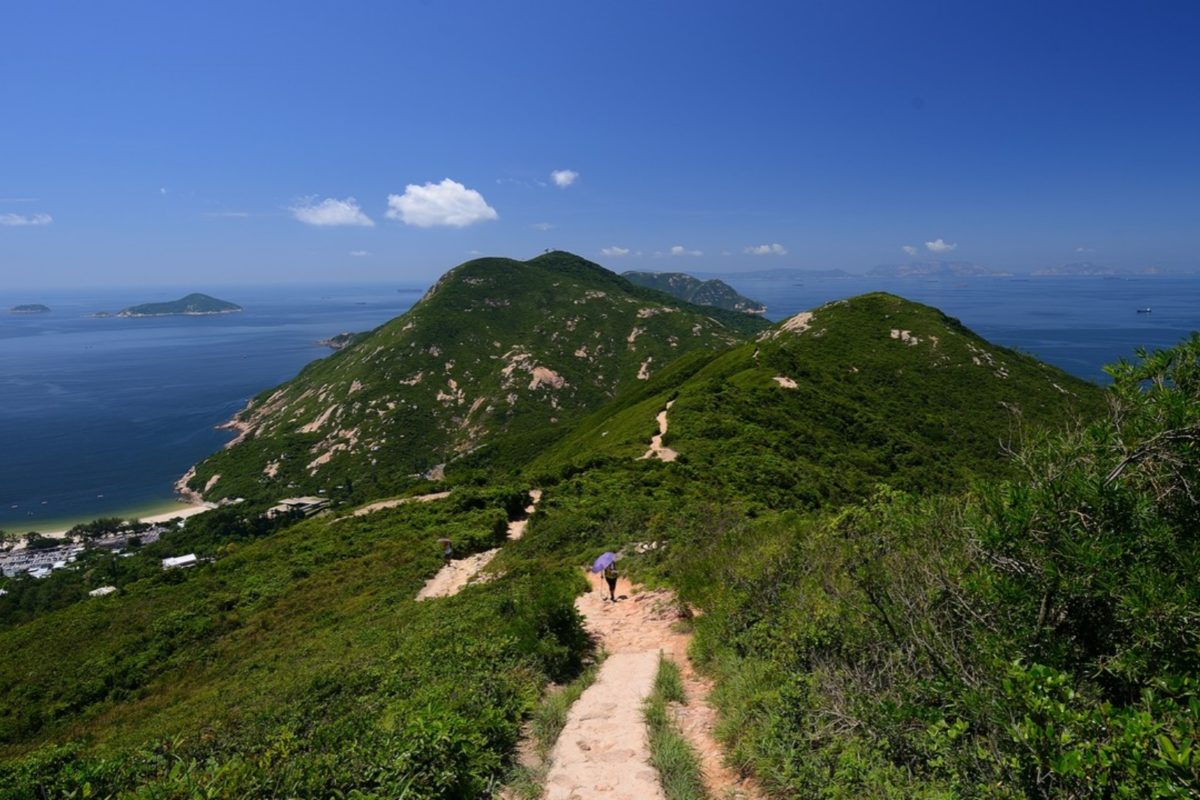
Hong Kong’s unique topography – consisting of three densely populated key regions and some 200 other small outlying islands – make it easy for flight-weary travelers to leave the confines of the city and get amidst the proverbial great outdoors. There are few better ways to achieve this than with a hike – the closest thing locals have (unless one counts dim sum, granted) to a national pastime.
If a stroll up the Peak sounds like a cakewalk, then consider setting 4-5 hours aside to tackle Dragon’s Back – the final leg in the Hong Kong Trail and a picturesque hike in its own right. Spanning around 8.5 km, your reward for navigating this hilly, meandering route (hence the name) are some of the best southerly vistas of Hong Kong Island. For surfers, there’s an added bonus: the trail empties out into Big Wave Bay, a popular spot for windsurfing.
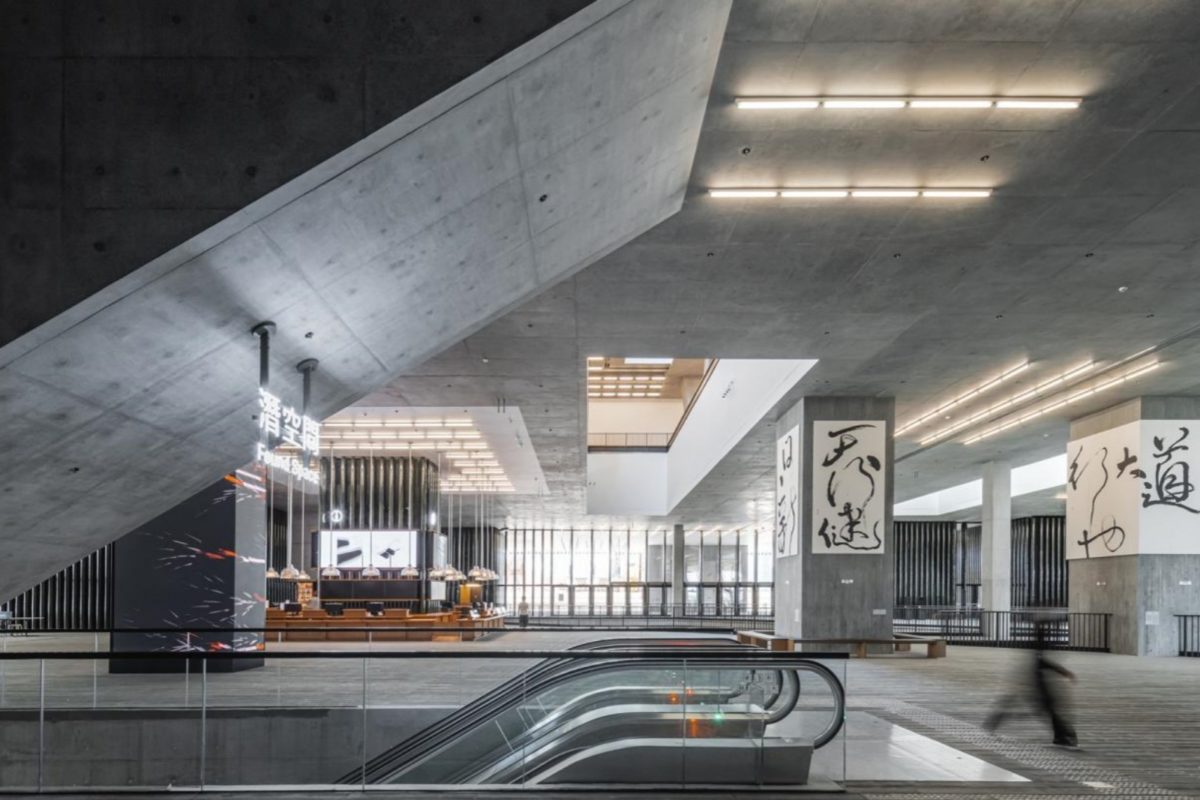
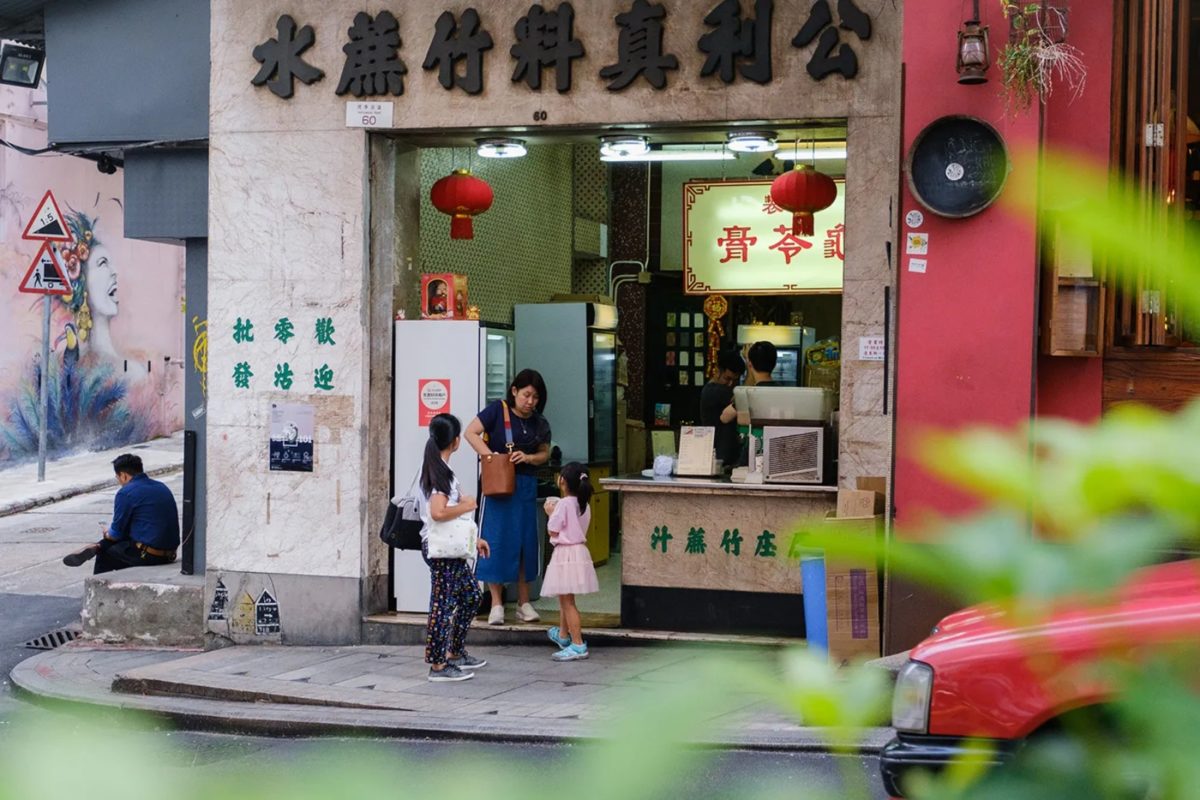
Hong Kong’s longstanding status as an epicentre for art collectors in the wider region – particularly those hailing from Greater China – mean there are also innumerable galleries and institutions worth exploring. Refreshed from the trails, it’s best to make a beeline for Hollywood Road – starting with the end closest to Central. Here, you’ll find Villepin: a lofty bolthole of a gallery, founded by the titular de Villepins, that is accessible only by reservation. The joy here is getting to live and breath seminal artwork of the 20th century – including a handful of renowned Chinese painters (whose masterpieces often hail from the de Villepin family’s own private collection).
When you’re done, cross the road for a pint of leung cha (‘herbal tea’) at Kung Lee: an unassuming shopfront in one of the neighbourhood’s last remaining pre-war tenements. All of the various elaborately named herbal teas aside, the go-to order here is sugarcane juice. A favourite of Hongkongers for decades, it’s a lightly sweet vitamin-rich beverage that’s restorative after a big night on the tools – and Kung Lee has been perfecting its recipe since 1948.
If private galleries with a ‘booking only’ policy aren’t really your jam, you could also run headlong in the opposite direction and make the journey out to M+: Hong Kong’s much-anticipated contemporary art museum, which opened its doors last November. Part of the wider West Kowloon Cultural District, it fronts a mixture of free and ticketed programming and – in the grand tradition of any venerable public museum – even operates its own fine dining restaurant (this one specialises in Korean cuisine).
Shop
Beyond the pail of massive one-stop-luxury-shops like Lane Crawford and Joyce, the +852 is home to a disproportionately vibrant community of specialist retailers offering up thoughtful and distinctive takes on clothing and accessories.
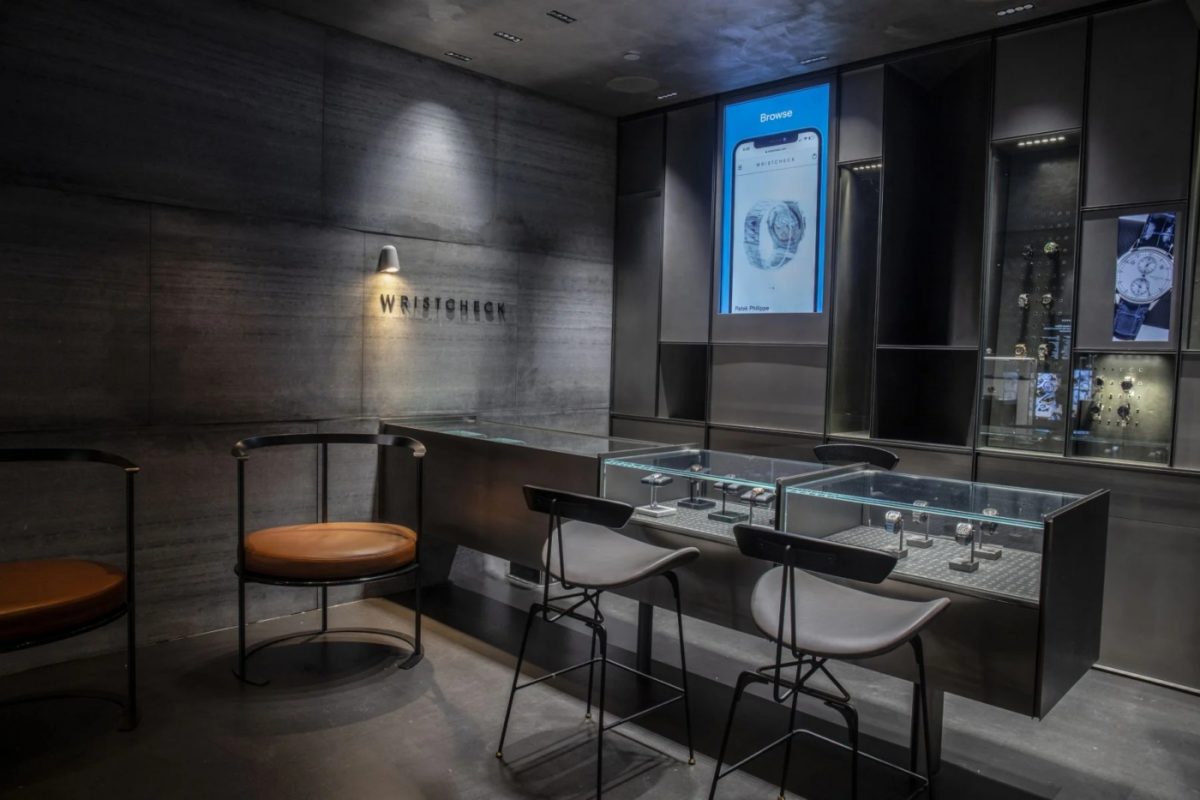
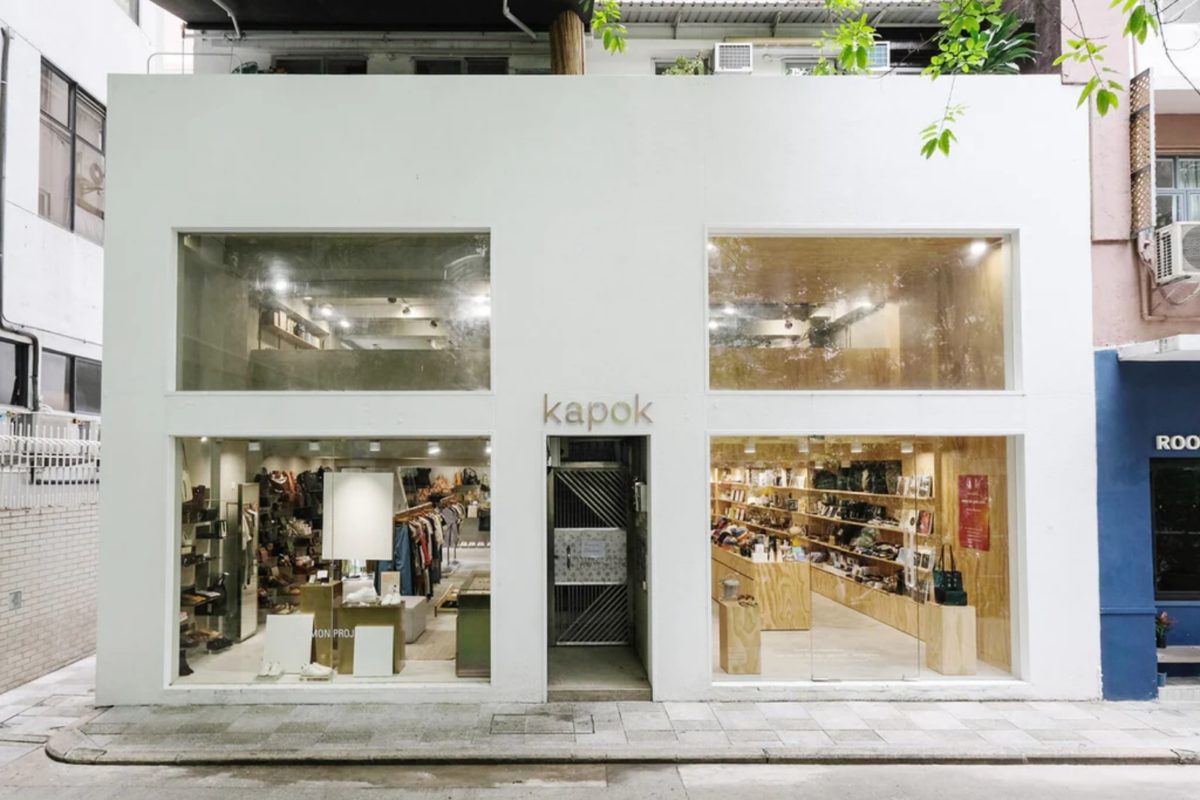
Whether you’re holed up at Rosewood or out enjoying the (barely) controlled chaos of Fashion Walk, Kapok is a beloved purveyor of quality lifestyle goods right throughout the city. Founded by French buyer Arnault Castel in 2006, my favourite store location continues to be the OG in Wanchai – amid leafy alleys and the open-air teahouses of St. Francis Yard. With 1,500 sq. ft. of space to play in, it’s a lot like Hong Kong’s answer to Incu – though there are also a plethora of fantastic city-specific gifts and knickknacks that will make fitting souvenirs for the folks back home.
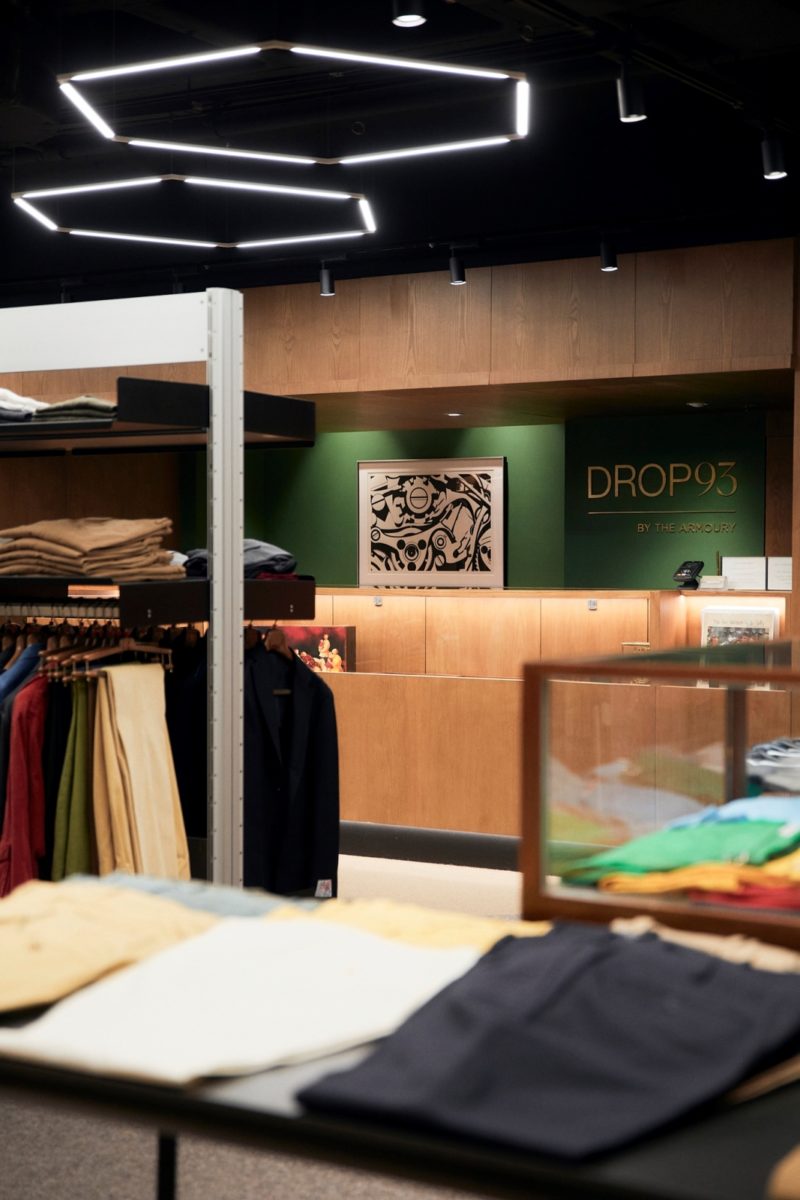
Conversely, assuming you’ve got your Platinum card handy (and are looking to make a real splash) Hong Kong’s not short on big budget retailers that can handily demolish your excess liquidity. ’24-Hour Tailors’ might sound like a lark in theory, but unless you’ve got the gait and posture of Dennis Rodman, you’re much better off stopping by Drop 93 – sister concept to genre-defining menswear emporium, The Armoury.
Laden with new old stock from previous collections (and a handful of rigorously vetted bespoke kit from The Armoury’s VIP clientele) even the quote, unquote ‘cheapest’ sportcoat here will set you back $700 – an amount you’re bound to happily part with once you discover the quality of craftsmanship on offer.
After loading up on Japanese workwear and smartly tailored trousers, it may be an idea to head across the road to The Landmark – where the usual cast of LVMH and Kering players can be found in droves. However, for the purposes of this travel guide, let’s content ourselves with a quick duck into Wristcheck (located on the complex’s first floor). A sleek new player in Asia’s robust pre-owned luxury watch market, the company’s inaugural boutique is where you’re able to handle all manner of horological firepower: ranging from 6-figure Audemars Piguet chronographs to nifty little expressions of ‘affordable’ watchmaking from indies like Ming, Kurono Tokyo and Baltic.
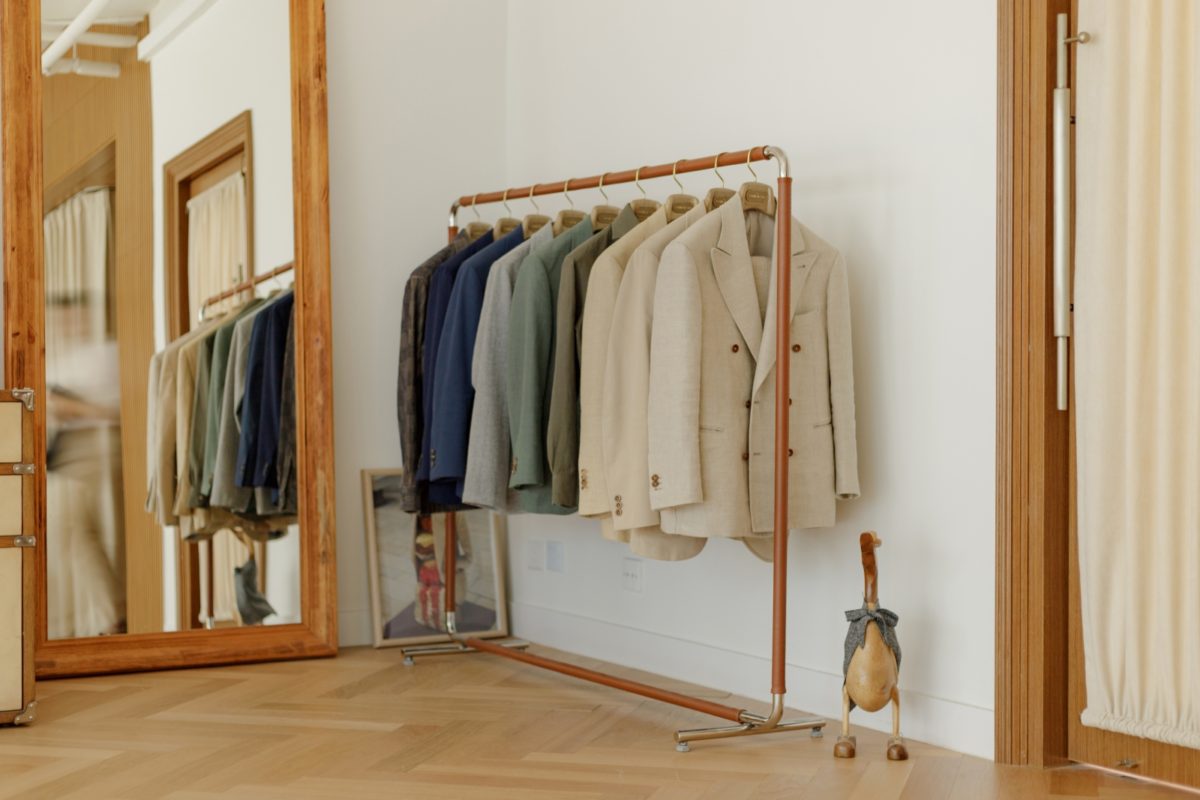
If having a suit made in Honkers is still something that’s tucked firmly in the back of your mind, then you may as well go the whole hog and visit the team behind The Anthology. Practically the antithesis of those ‘2 for 1’ tailors you’ll spot all over Tsim Sha Tsui, the brand – established by local co-founders Andy Chong and Buzz Tang – specialises in tailoring that is both decisively better-made and possessed of a distinctive aesthetic perspective.
Made-to-measure jackets start at a cool $2,000; but for the price of admission, you’re treated to a comforting garment with loads of (practical) finishing that brings the best of Italy’s northern and southern tailoring traditions to bear in service of a ‘house style’ that flatters men of most ages. For something slightly less committal, Buzz and Andy also offer a range of ready-to-wear (I recommend the brand’s best-selling ‘Lazyman’ jacket).
Eat & Drink
Long regarded as a ‘culinary paradise’ (飲食天堂) throughout East Asia, Hong Kong brings a world-class roster of cheap eats and Michelin stars to bear – giving diners a certifiable buffet of options when the question of what/where to eat arises.
In what is liable to be the meatiest part of this Hong Kong travel guide (pun intended), I’ll take you through a mixture of all the restaurants and watering holes that have brought me sustained joy these past few years. Just remember: this list is a ‘curated’ one, as opposed to being exhaustive…
Jimmy’s Kitchen
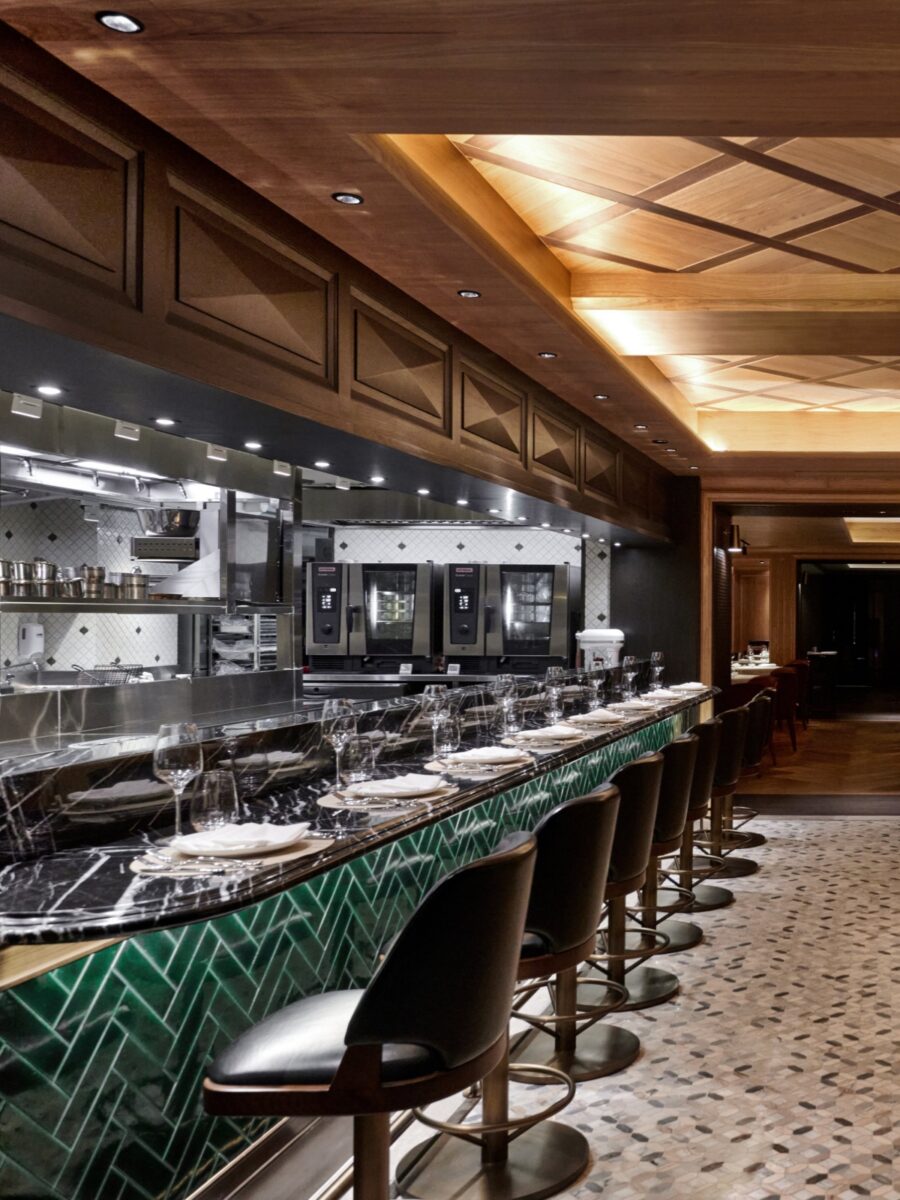
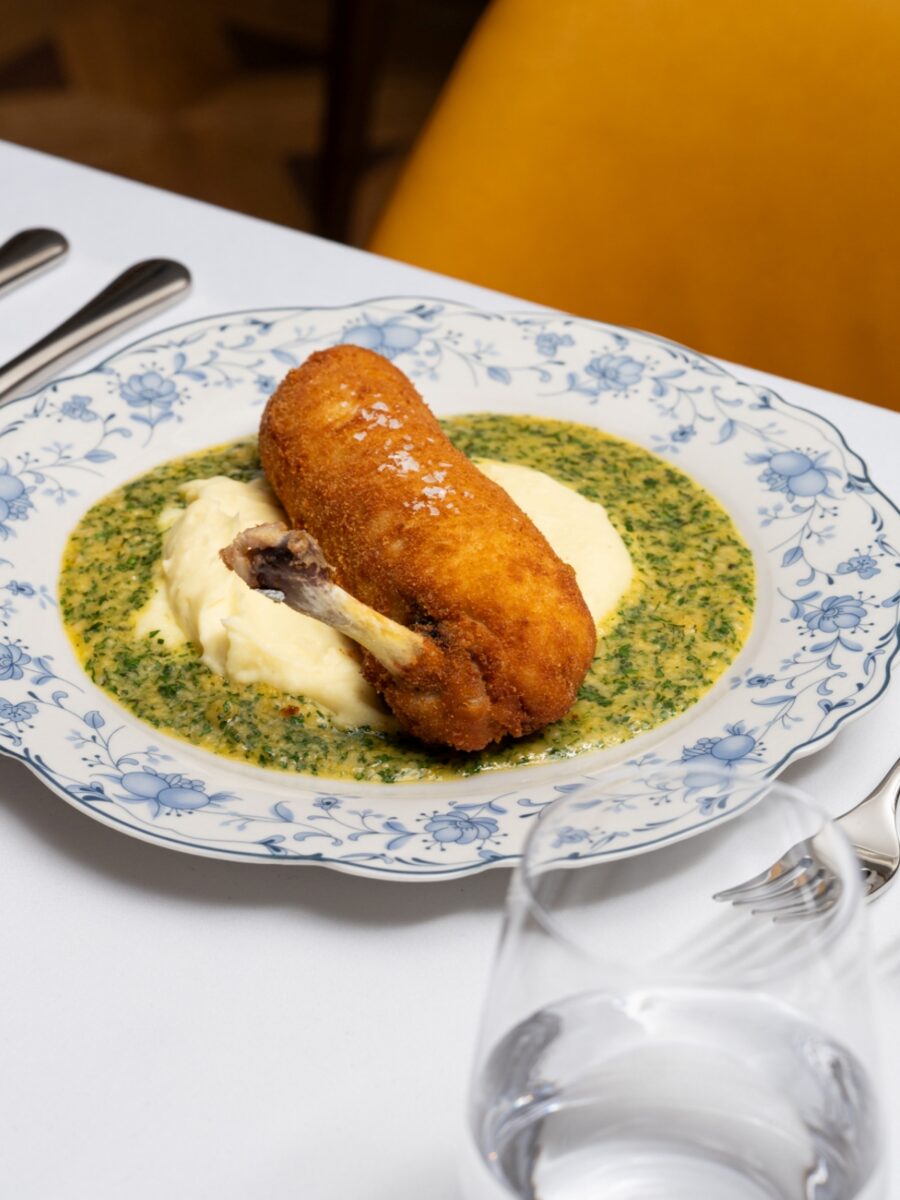
Cards on the table: Jimmy’s is by no means the most buzzy or daring Hong Kong restaurant opening of the past few years; yet it retains a place of paramount importance in the fabric of the city’s F&B community. Originally located in the downtown thoroughfare of Theatre Lane, the restaurant reopened its door in 2024 with a swish new multi-space venue atop the mezzanine of the newly refurbished Pedder Arcade.
A long crudo bar, clubby dining room, and all-day café (serving afternoon tea out front) imbue Jimmy’s with something of an egalitarian appeal: echoing such fine British establishments as The Wolseley, where diners can pop in at most hours of the day for a sip, snack, or incredibly substantial dinner.
Start with a stiff, wonderfully unfrilly Martini (there are no less than 8 variations to choose from) before turning your attention to the a la carte. Under the ministrations of Chef Russell Doctrove, a sharp coat of varnish has been applied over what are, fundamentally, classic continental dishes.
Jimmy’s origins in 1920s Shanghai (and subsequent relocation to British Hong Kong) are reflected in many of its most popular orders. Borscht and chicken kiev tell of a long association with the Russian Empire.
It’s not hard to imagine that the now-iconic (and mouthwateringly spicy) ‘Jimmy’s Madras’ was first introduced to local palates via the East India Company; and the Meunière-style sole, zhushed by Doctrove with decadent lashings of lardo and chicken jus, conjures images of the grand grillrooms of old — once the standard for the city’s Anglo-French dominated fine dining scene.
What to order: Jimmy’s Stroganoff (HK$258; ~$50), Chicken Supreme ‘Kiev’ (HK$238, ~$47), Jimmy’s Prawn Madras (HK$268, ~$52), Baked Alaska (HK$228, ~$45)
Whey
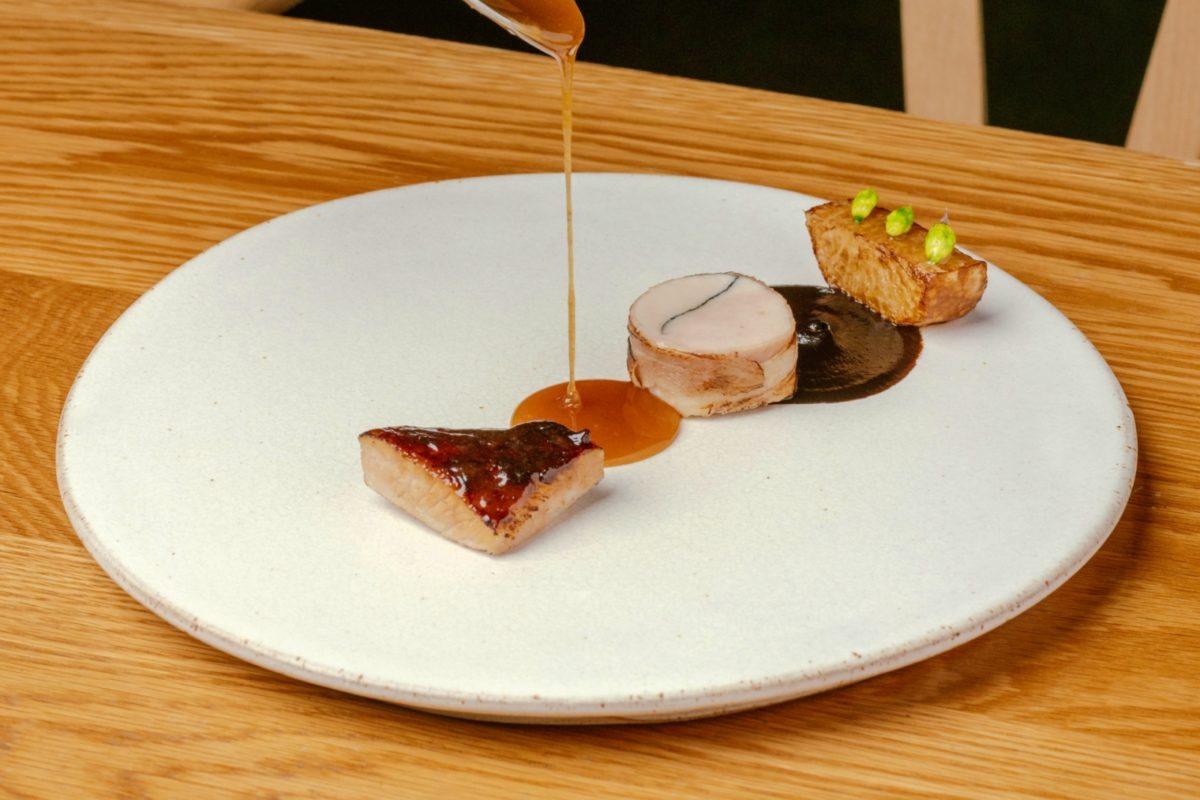
The natural progression of Executive Chef Barry Quek’s love for down-home Singaporean cuisine (which he rediscovered whilst cooking laksa during the earliest days of Hong Kong’s pandemic response) Whey is, for the purposes of brevity, what Western food writers might term a ‘casual fine diner’.
From a laidback dining room in Sheung Wan hovering above street level, Quek prepares quintessential Southeast Asian produce (focusing especially on the staples of Malaysia and his native Singapore) with all the technical rigour and creativity you’d expect of a tortured Nordic genius. That makes perfect sense when you start to parse Quek’s résumé: a mixture of apprenticeships under Merlin Labron-Johnson (Portland), Kobe Desramaults (Chambre Separee) and even Melbourne’s own Ben Shewry (Attica).
Buoyed by an adventurous wine program, any meal at Whey is an amalgamation of epiphany and pleasure. There are no empty theatrics involving deconstruction or gimmicky plating: simply Southeast Asian flavours given a jolt of delectable un-reality when re-envisioned as bread courses, meat-and-veg entrées and addictive, individually satisfying mignardises.
What to order: Tasting Menu (HK$1,450; approx AU$266)
The Aubrey
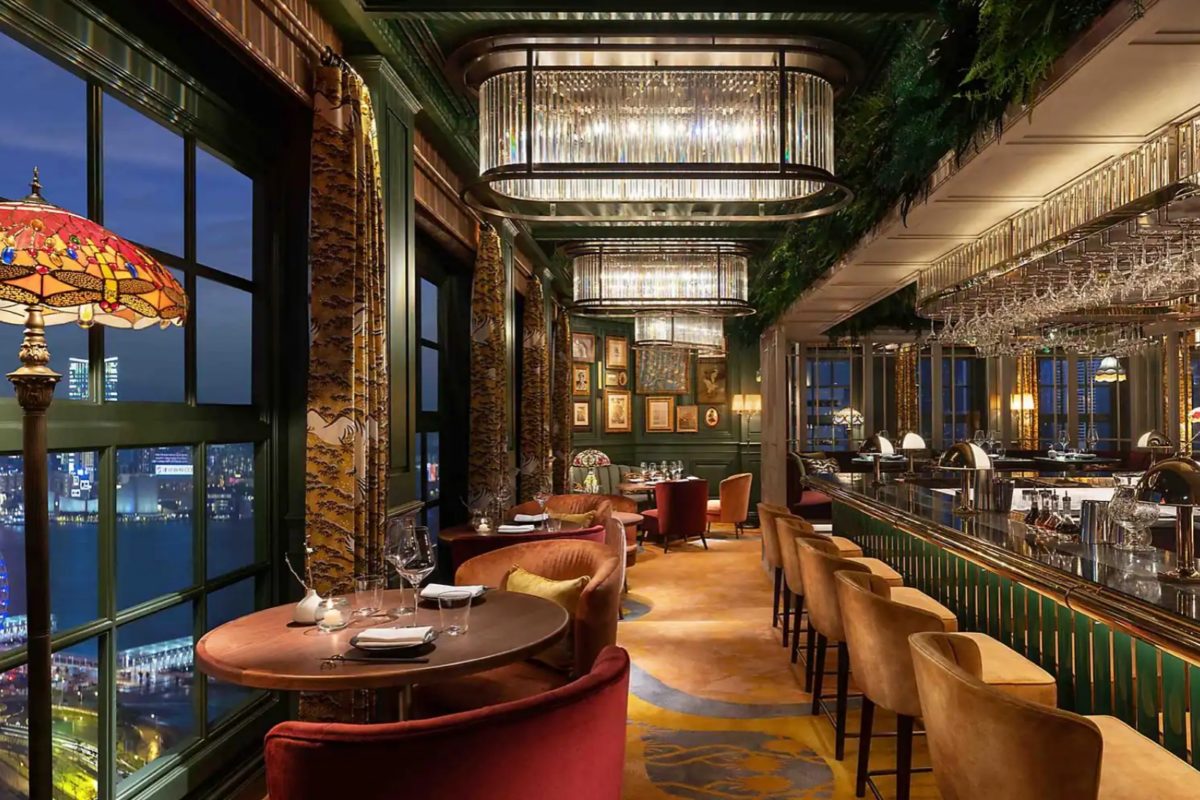
Put bluntly, you could probably write an entire feature about the restaurant line-up at the original Mandarin Oriental (charmingly referred to by many Hongkongers as ‘old MO’) but since sharpeners are such a big part of my editorial remit here at BH, it feels right to focus in on The Aubrey – the hotel’s relatively new Japonisme themed venue that replaced two-Michelin-starred Pierre.
While the hotel’s regulars – a panoply of high-powered execs, taipans, and generational scions – weren’t quick to embrace the new all-day dining concept (it’s split across three, individually themed sections) The Aubrey managed to crack the 2022 edition of ‘Asia’s 50 Best Bars’ (#38), in large part because of managers Enrico Petrella and Devender Sehgal.
Sehgal, in particular, is The Aubrey’s secret weapon: a smooth-talking, white-jacketed master of ceremonies, whose personal passion for shochu (a traditional Japanese beverage distilled from various starches and staple grains) has inspired the thrust of the latest cocktail menu. Drinkers certainly won’t miss a trick ordering classics, but the new signature libations – crafted with specialty shochu from four prefectures in Japan – is worth tucking into: a delicious grand tour through the diverse world of trad Japanese distillates.
What to order: Torii (HK$160; approx AU$29), Orin (HK$180; approx AU$33)
Mak’s Noodles (Central)

By now, I imagine all this talk of Michelin stars and hotel bars has engendered a fierce hankering for fast food restaurants; and while Hong Kong is full to bursting with those (including a couple U.S. chains we’ve yet to receive down under, a la Blue Bottle and Shakeshack) for a quintessentially local alternative, a quick stop-in at Mak’s Noodles is essential.
With roots in Mainland China dating back to 1920, Mak’s is considered by many local Hongkongers to be the foremost purveyor of the humble wonton noodle soup – a staple of Cantonese cuisine, elevated to godhood through execution and meticulous technique. Naturally, there’s a healthy array of distractions on the menu, including stirred ‘dry’ noodles (lo mien) and the obligatory plate of veggies, but it’s best to go straight for the jugular and order one, two – maybe even three – portions of the signature wonton noodles.
Beyond the perfectly springy noodles and clean, alkaline-rich flavour of the soup, my favourite thing about a bowl of Mak’s are the dumplings. Wrapped in an impossibly thin, almost translucent layer of egg dough, each is stuffed with a generous amount of pork, prawns and wood ear fungus – lending a satisfying balance of succulence and bite to your every mouthful.
What to order: Signature Wonton Noodles (HK$45; approx AU$8), Stirred Noodles With Beef Brisket (HK$66; approx AU$12)
The Diplomat
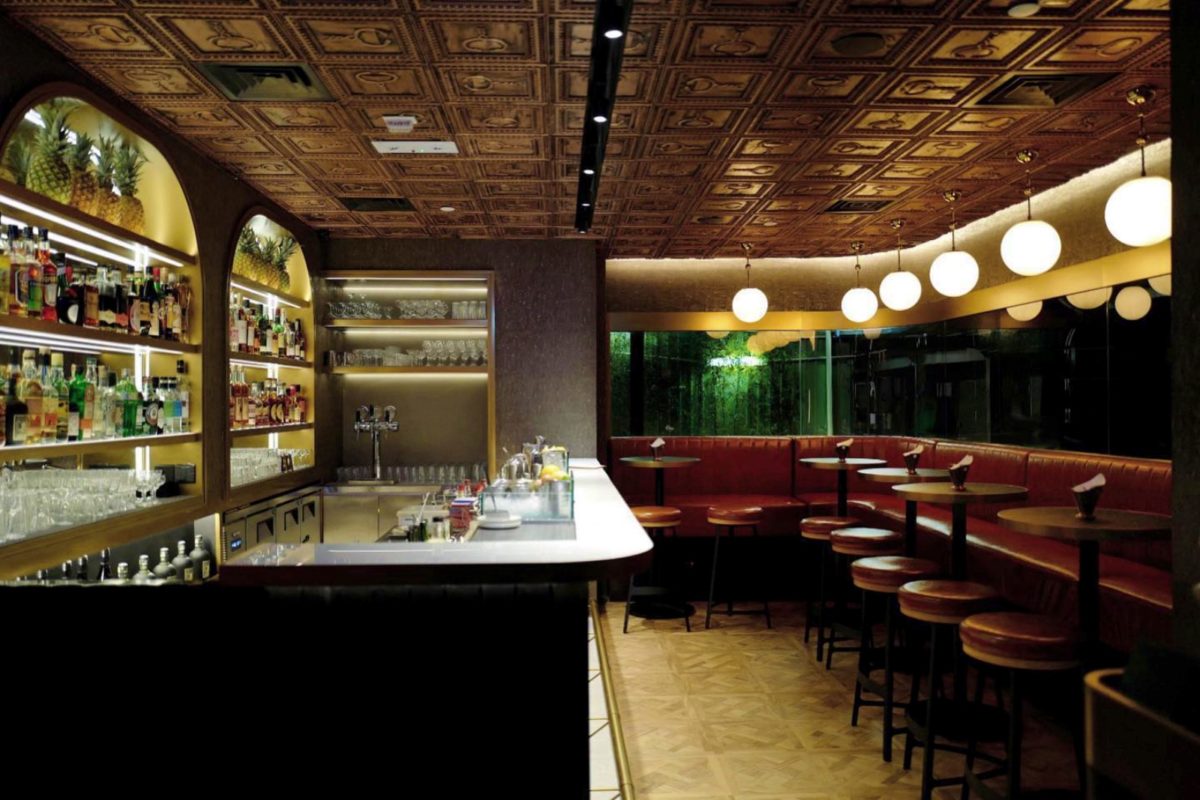
Billed as an ‘American tavern’ in the heart of Central’s jampacked H Code precinct, it’s difficult to put a finger on any one explanation as to why The Diplomat is such a rewarding drinking destination. Of course on paper, Head Bartender John Nugent’s belowground bolthole possesses all the right fundamentals: a bevvy of industry awards, powerfully ‘grammable fit-out (essential in snap-happy Hong Kong) and hospitality that cleaves to the Cheers ethos of “a place where everybody knows your name”.
More than all that, as with any great neighbourhood institution, The Diplomat is the kind of venue where – in spite of extremely finite floorspace – you’re never left feeling bored. One can stop by early in the evening’s proceedings for a delicious Irish Coffee, or right after dinner for a range of decadent sipping cocktails. On the off-chance you’re still hungry, throw moderation out the window and order the eponymous Diplomat burger: the bar’s ventricle shrinking tribute to the classic ‘Murcan comforter, made with the same Ozaki beef favoured by sister venue Wagyumafia.
What to order: English Milk Punch (HK$95; approx AU$18), Tarling (HK$115; approx AU$21), The Diplomat Burger (HK$180; approx AU$33)
Hop Sze (Sai Wan Ho)

To enjoy the majority of eateries included in this guide thus far, it’s hardly fatal if diners lack the ability to properly speak Chinese. Though, in the case of Hop Sze – a legendary neighbourhood joint located in the eastern Island district of Sai Wan Ho – the opposite is very much true. A cramped and unassuming dining room favoured by Hong Kong’s teeming legions of epicureans – think food writers, restauranteurs and the occasional TVB celebrity – Hop Sze (translated literally into English as ‘timely’) is a paean to many of the forgotten classics of yesteryear.
Some of these dishes will be familiar to Western palates – including an electrifying rendition of the classic sweet & sour pork – whereas others are textbook Hong Kong. By way of example: a gargantuan gratin of pork chop rice, loaded up with 8 fried eggs and enough tomato sauce to power a Food Network travelogue. My own 10 cents? No matter what else you ingest, save room for the shrimp toast, which makes use of both whole pieces of shrimp and shrimp paste to ensure a morsel that is perfectly juicy and savoury with every bite.
Assuming you’re serious about going, the best way to tackle Hop Sze – as with any casual eatery worth its Bib Gourmand – is en masse. A party size of 5-10 – at an average spend of HK$300 (approx. AU$55 per head – is vital if you’re keen to sample a good cross-section of the restaurant’s signature dishes; and, as previously mentioned, it’s imperative at least one of your fellow diners be (at bare minimum) conversant in Cantonese. Bookings are essential.
Pro tip: for seasoned Chinese speakers, consider pre-ordering when you phone up Mrs. Lam, Hop Sze’s bespectacled manager; as a number of signature dishes tend to sell out early during service.
What to order: Soy Sauce Chicken, Steamed Threadfin, Shrimp Toast
Bar De Luxe
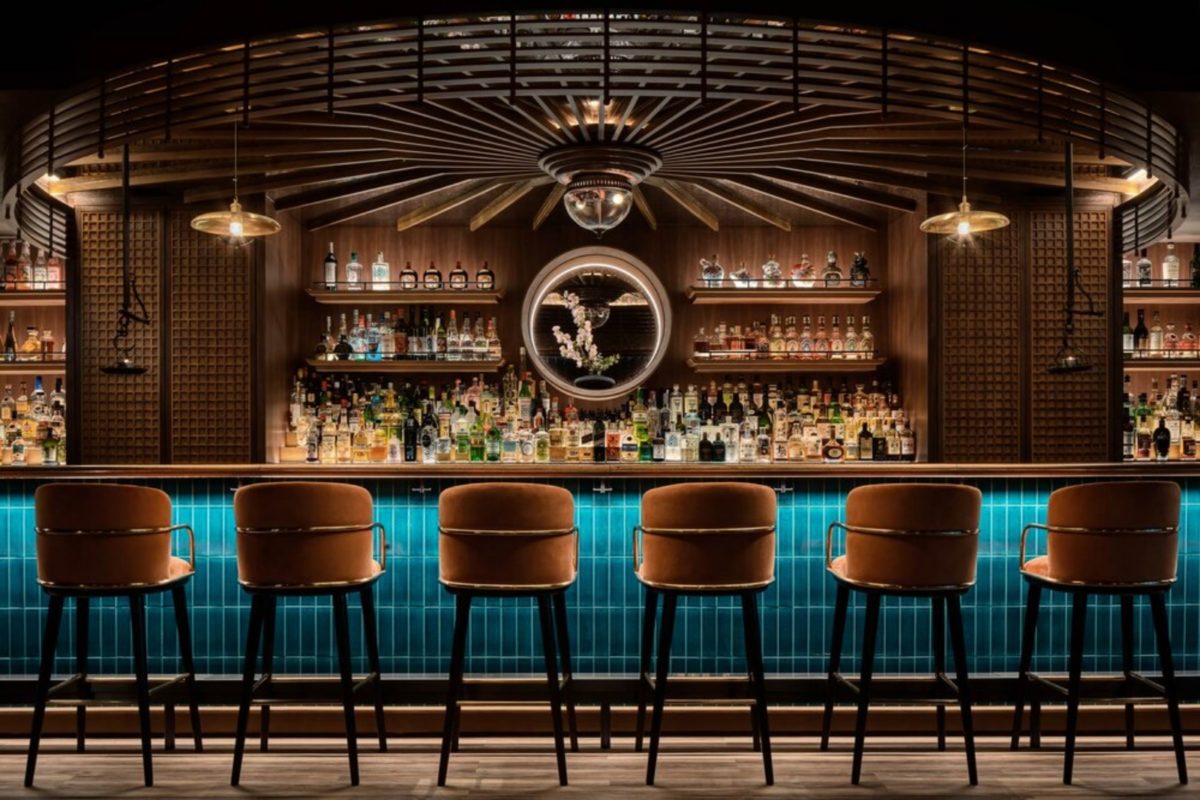
Renowned in a previous life for being the only cocktail divan outside of Japan to be co-opened by legendary Bar High Five founder Hidetsugu Ueno, Bar De Luxe’s sophomore incarnation is a good deal less stiff than before – and blessedly, oodles more fun.
Located in the same sky-high entertainment complex as The Diplomat, this venue’s primary stock in trade remains classic mixed drinks of a flavour and disposition not dissimilar to what you’d find in a high-end Ginza cocktail bar. Drinks enriched with seasonal fruits imported from the Japanese mainland are a big draw here; as are the fastidiously crafted classics, such as a perfectly satisfying Old Fashioned or ‘black’ Negroni tinged with Fernet Branca.
Staged on the periphery of Lan Kwai Fong, the bar here even possesses its own terrace – a giant advantage over the previous location – which is perfect for a post-dinner puff. Pro tip: be sure to ask Joiz Wong, the venue manager, for a line on cigars (with which Bar De Luxe is amply supplied).
What to order: Moscow Mule (HK$128; approx AU$24); Black Negroni (HK$148; approx AU$27)
Sheung Hing Chiu Chow Restaurant
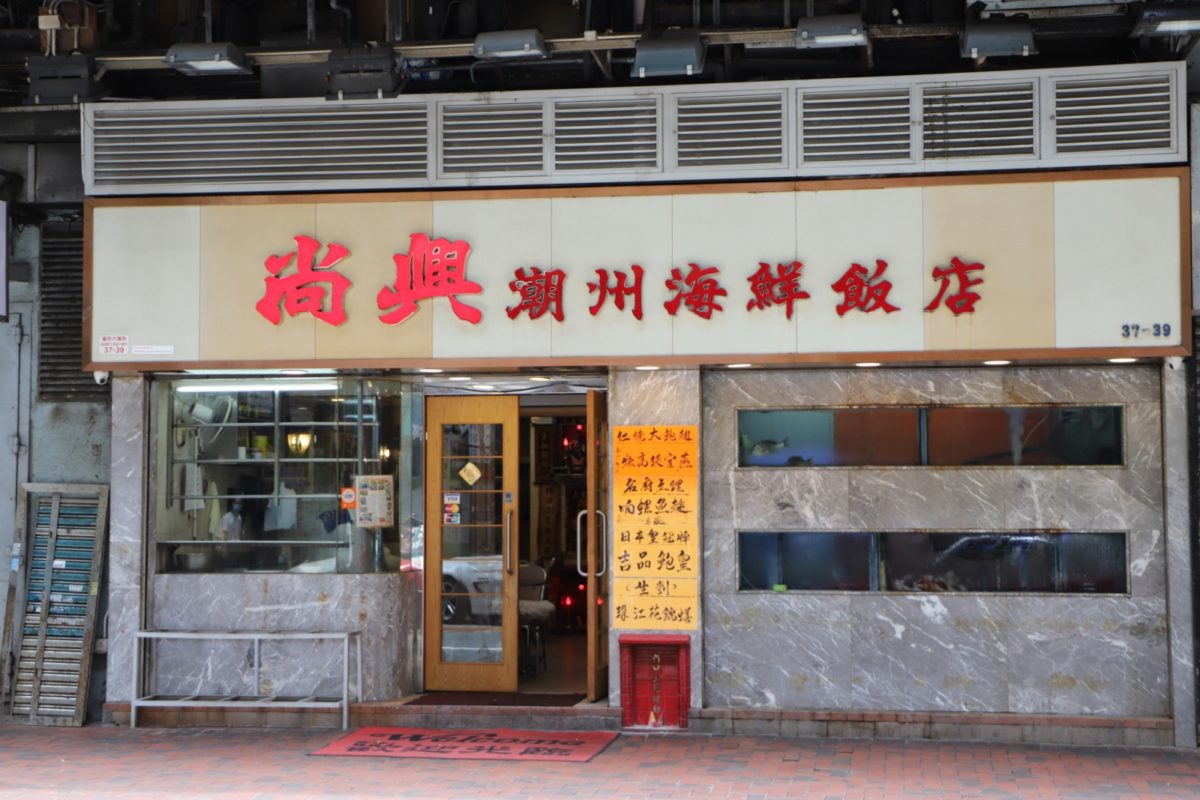
A stone’s throw from the ever-popular Queen Street Cooked Food Centre, Sheung Hing Chiu Chow (dubbed simply by most locals as ‘Sheung Hing’) runs a delicious, much-revered sideline in the regional cuisine of Teochew – a city in the eastern part of Guangdong.
As with Hop Sze, you can expect a cacophonous dining room and style of hospitality that, to the uninitiated, might appear downright hostile; but stick with it, and you’ll be rewarded with a variety of live seafood and stir-fried dishes that shed some light on authentic Cantonese food’s diverse, manifold origins.
True to the heritage of Teochew, dishes cooking in lo shui (vaguely translated as ‘master stock’) are a big thing. Offering shades of pickling, brining and marinating, goose or bean curd cooked using this technique has a wonderful pungent flavour – perfect for pairing alongside a bucketful of Blue Girl lager or 2006 La Mission Haut Brion. (Corkage, as you’d expect of any such establishment where the cooking is the star, comes completely free of charge.)
What to order: Teochew-style Cold Crab (market price), Goose in master stock (HK$138; approx AU$26), Baby oyster omelette (HK$98; approx AU$18)
Testina

Leaning into the (somewhat barbed) stereotype that Chinese diners enjoy eating anything with four legs barring the dinner table, it’s small wonder that Testina – affiliated with the world-famous Milanese offal specialist, Trippa – has been such a hit amongst Hongkongers.
Neither a compact cocktail menu or stylish list of premium Italian wines (particularly heavy on producers from Piedmont and Tuscany) can distract from the fact that at Testina, head-to-tail dining is the undisputed drawcard. That means big rustic lashings of Fassona beef tartare; honeycomb tripe that has been fried until crunchy and golden-brown (the perfect foil to a couple of cold Peronis); a main course of melt-in-your-mouth pig’s head that blows porchetta right out of the water; and numerous other such crowd pleasing morsels.
Even if you don’t fancy yourself a lover of Italian cuisine’s naughtier, more offal-y bits – the tagliatelle with duck ragù is a safe and equally delectable option – there’s enough here to challenge the conventional wisdom that all of Hong Kong’s great Italian restaurants require Alba truffle and Michelin stars. For that realisation alone, it’s worth a trip.
What to order: Pig’s Head with Salsa Verde (HK$348; approx AU$64), Trippa Fritta (HK$198; approx AU$36), Beef heart with charcoal grilled seasonal vegetables (HK$288; approx AU$53)
Traveling to Hong Kong
Cathay Pacific flies daily, from Sydney and Melbourne, to Hong Kong. Flights from Perth and Brisbane operate 3-4 times weekly. For a full up-to-date schedule, visit Cathay Pacific online.
Of course, you can’t mention the Hong Kong flag carrier without also highlighting its excellent network of lounges at HKIA: a real sweetener on the day you depart the city.
We recommend top-tier frequent fliers (with oneworld ’emerald’ status) check out our full review of The Pier, First Class lounge below. Alternatively, if you’re traveling on a business class fare and/or hold oneworld ‘sapphire’ membership (one rank below the aforementioned emerald), you can access The Pier, Business Class immediately next door.
RELATED: For Elite Fliers, Cathay Pacific’s ‘The Pier’ First Is Still An Absolute Weapon Of A Lounge
The Pier, Business Class Lounge
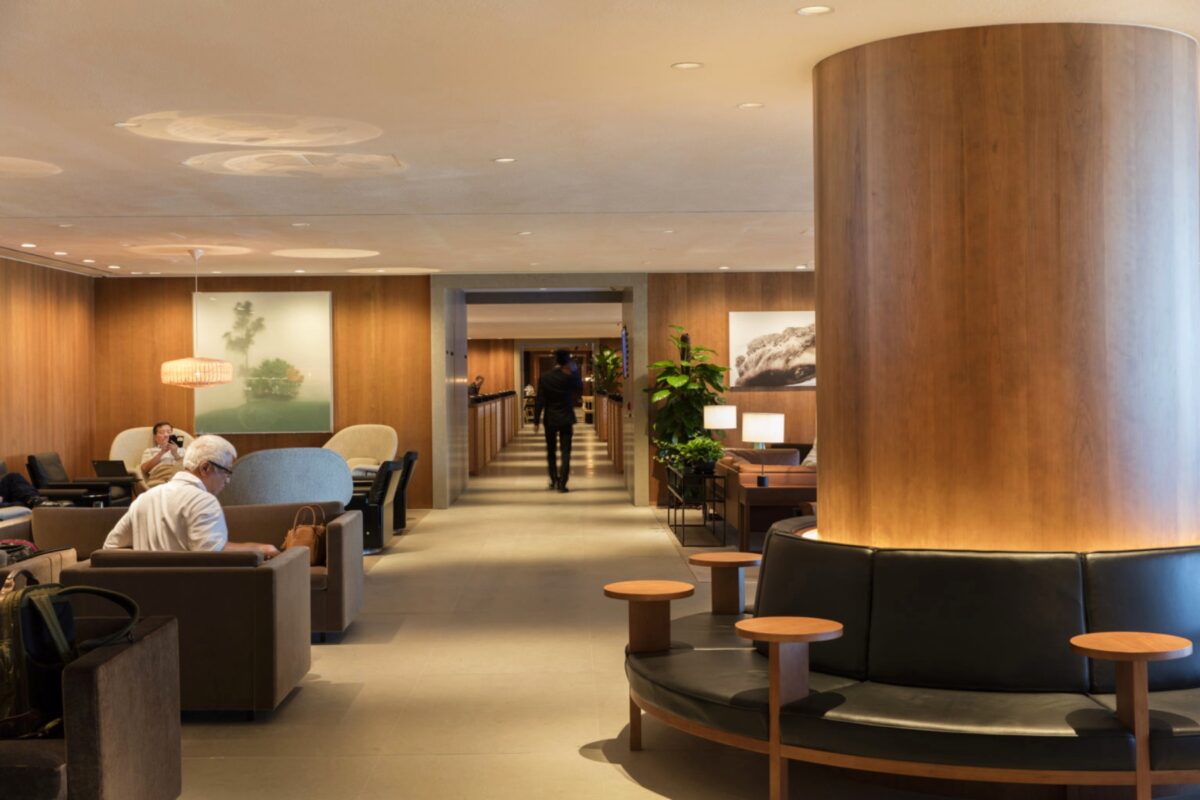
Cathay Pacific’s The Pier Business Class Lounge at HKIA offers a serene and stylish retreat for travelers. In many ways, it is also the blueprint for the airline’s array of award-winning J-class lounges abroad.
Despite its sprawling 3,306 sqm footprint, British designer Ilse Crawford has imbued the space with a warm, residence-like aura: using soft, diffused lighting and a range of natural building materials such as limestone and cherry wood.
This lounge was built to accommodate 500 (yes, five hundred) guests at any one time – a number that makes immediate sense once you parse all of the individual ‘zones’. These go well beyond the typical bar area and shower rooms.
In fact, aligned with Hong Kong’s reputation as a foodie city, there are three distinct dining experiences on offer: including the buffet-style Food Hall; dandan-slinging Noodle Bar; and, most uniquely, a ‘Tea House’ where Chinese and Western teas are brewed round the clock to order.
